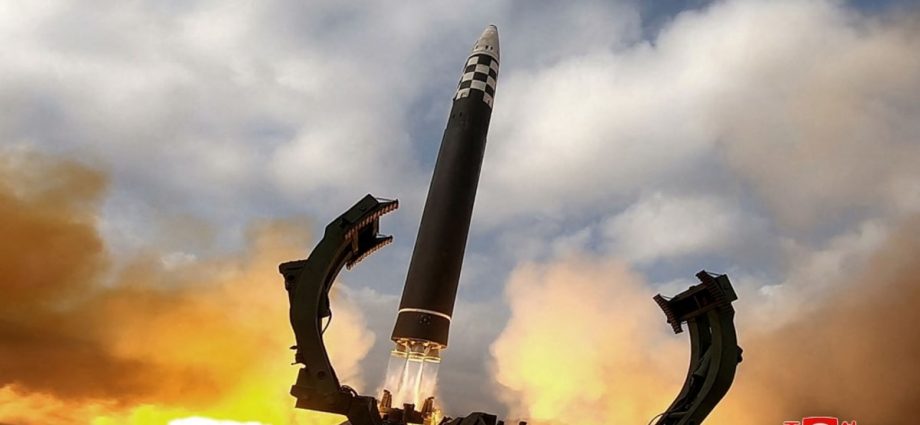
SEOUL: North Korea’s most recent intercontinental ballistic missile test, its first in seven weeks, was of a Hwasong-15 launched as part of a surprise drill, state media KCNA reported Sunday (Feb 19).
The Saturday afternoon launch quickly received condemnation from South Korea, the United States and Japan – which said it landed in its Exclusive Economic Zone (EEZ) – as well as the G7 group of nations and the European Union.
Launched from the Pyongyang International Airport, the “missile traveled up to a maximum altitude of 5,768.5km and flew 989km for 4,015 seconds before accurately hitting the pre-set area in open waters of the East Sea of Korea”, KCNA said, using the North’s preferred term for the Sea of Japan.
Japan’s government on Saturday had said the missile flew for 66 minutes and could have had the capacity to fly 14,00km – which would mean it was capable of hitting anywhere on the mainland United States.
KCNA reported that “the drill was suddenly organised without previous notice”, and that North Korean leader Kim Jong Un had personally signed off on the test.
North Korea on Friday had threatened an “unprecedentedly” strong response to upcoming US-South Korea drills – which it described as preparations for war.
Seoul and Washington are due to start joint tabletop exercises in the coming days aimed at improving their response in the event of a North Korean nuclear attack.
The surprise launch on Saturday, KCNA said, was “clear proof” of the reliability of North Korea’s “powerful physical nuclear deterrent”.

